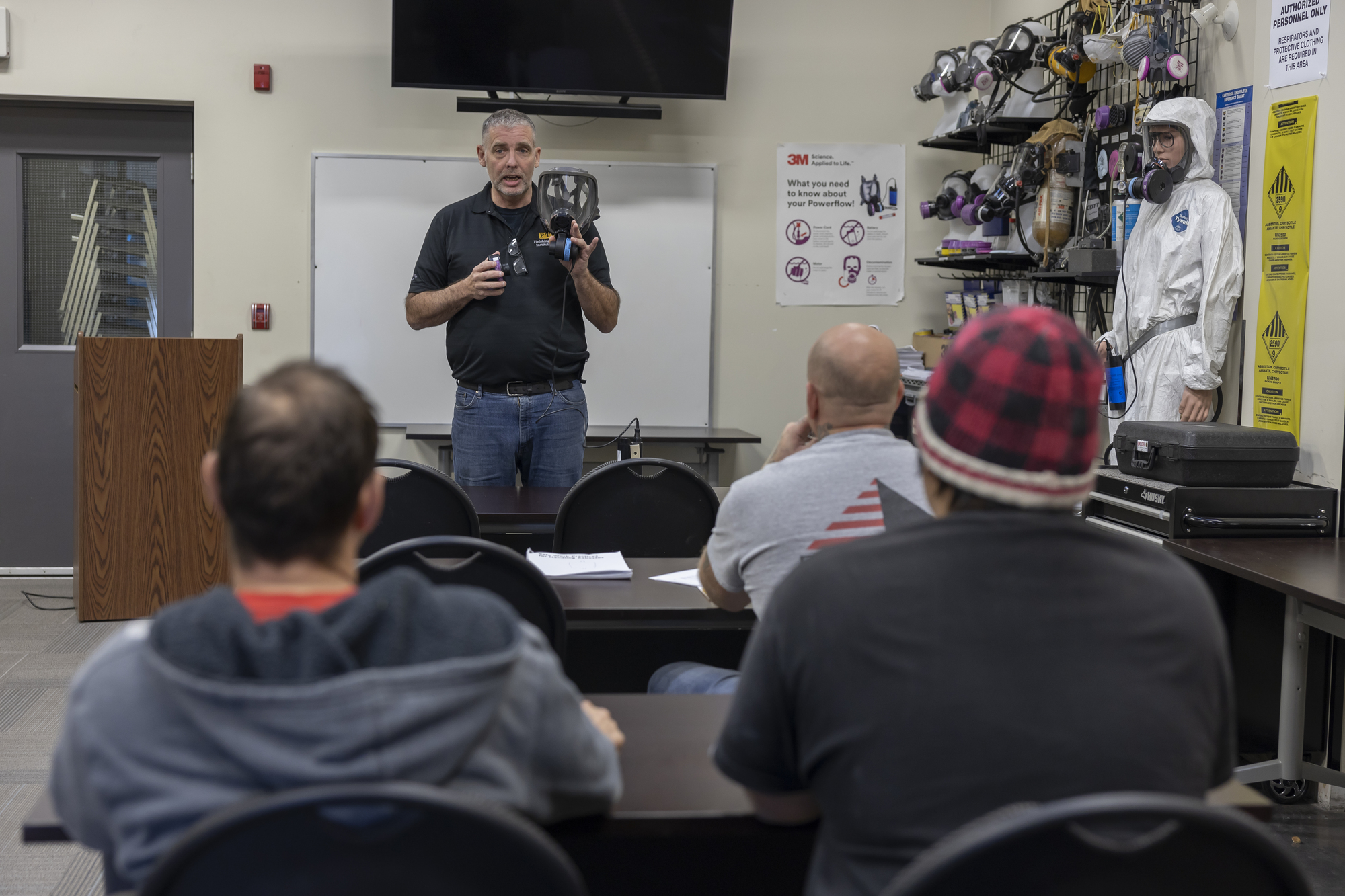An important date for employers and workers in the asbestos abatement industry in British Columbia is fast approaching.

Photo credit: © WorkSafeBC (Workers’ Compensation Board of B.C.), used with permission
By Marnie Douglas, Guest contributor to Speaking of Safety
Exposure to asbestos can cause serious long-term health issues and even death. Anyone who repairs, renovates, or demolishes buildings is at risk of exposure, as asbestos was widely used in thousands of building materials in B.C. and it can still be found in many buildings even today.
It’s why come January 1, 2024, asbestos abatement employers must be licensed to operate in the province, and anyone performing asbestos abatement work must be trained and certified. B.C. is the first jurisdiction in Canada to implement a licensing requirement for this work.
The goal behind the new licensing and certification requirements is to keep workers safe. To better understand how workers may be feeling about the training and certification, I talked to several employees at NorHaz Solutions. NorHaz removes and remediates hazardous materials from all types of buildings across B.C. — from houses to large industrial and commercial buildings.
NorHaz site surveyor Doug Braun explains that the training he took consisted of 11 online modules with a quiz following each module. He then attended the practical assessment in person and finished up by writing the multiple-choice exam.
“I have been in the abatement industry for over 10 years and found the information in the modules to be well laid-out, covering all the necessary topics,” says Doug, describing the training as practical, straightforward, and covering the basics that everyone in the industry needs.
Doug suggests that it makes sense for anyone in the construction industry to have a minimum level of awareness and understanding of procedures when they encounter asbestos-containing materials. Over the course of his career, he’s seen asbestos abatement workers placed at risk due to lack of training and companies that compromise employee safety by not following the regulations.
“I fully support WorkSafeBC in their efforts to bring increased safety to the abatement industry … this training and certification requirement is very timely and welcomed,” he adds.
Dean Ganie is a branch manager with NorHaz and says 18 staff recently completed the training and certification. They all found the process fairly straightforward and informative.
Dean adds that NorHaz even implemented its own asbestos awareness training program for new staff and as a refresher for existing staff before the additional required training. He recommends other employers take the time to pre-train staff before having them complete the formal training and certification.
“It’s helpful and provides just that much more information,” he says.
He adds that NorHaz strongly endorses the licensing of hazardous materials companies and required training for field staff and supervisors. Says Dean: “We feel this will bring a very important level of safety to the industry.”
NorHaz logistics manager Rick Guenther completed the training and says he found the course “informative and well written.”
“When I did the practical test, they had a great set-up. Everything was well laid out,” he says. “The written test was the trickiest part. Overall, though, it was the most comprehensive course I have done.”
The certification process
Only training from a WorkSafeBC-approved provider qualifies you for a certificate. Contact training providers directly to learn more about their asbestos abatement training offerings, including dates, length of training, location, and cost.
Once you have successfully completed the training and passed the exam, you will be given your certificate, which will be valid for three years.
Visit WorkSafeBC’s Asbestos training, certification & licensing webpage to learn more about what the training and certification process looks like and for answers to common questions.


